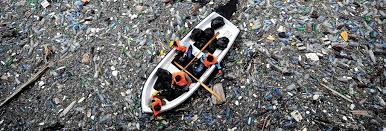
Introduction:
In recent years, the world has been increasingly awakened to the alarming consequences of pollution and plastic waste. From the contamination of air and water to the devastating impact on wildlife and ecosystems, the pervasive presence of pollutants poses a significant threat to our planet and all its inhabitants. In this article, we delve into the multifaceted challenges posed by pollution and plastic waste and explore potential solutions to address these pressing issues.
The Pervasive Presence of Pollution:
Pollution comes in many forms, ranging from air and water pollution to soil and noise pollution. Each type carries its own set of detrimental effects on both the environment and human health.
Air pollution, primarily caused by the burning of fossil fuels, industrial emissions, and vehicle exhaust, contributes to respiratory diseases, cardiovascular problems, and premature deaths. Moreover, it exacerbates climate change by releasing greenhouse gases into the atmosphere, leading to rising global temperatures and extreme weather events.
Water pollution, resulting from industrial discharge, agricultural runoff, and improper waste disposal, contaminates freshwater sources and marine ecosystems. This contamination not only endangers aquatic life but also jeopardizes human access to clean drinking water, particularly in developing countries.
The Menace of Plastic Waste:
Plastic pollution has emerged as one of the most pervasive and challenging environmental issues of our time. The durability and low cost of plastics have led to their widespread use in various industries, from packaging to construction. However, their non-biodegradable nature means that once discarded, plastics persist in the environment for centuries, if not millennia.
Single-use plastics, such as bottles, bags, and straws, pose a particularly acute problem due to their prevalence and limited recycling rates. These items often end up in landfills, where they leach harmful chemicals into the soil and water or find their way into rivers and oceans, where they accumulate in vast floating patches of debris.
The Impact on Wildlife and Ecosystems:
The consequences of pollution and plastic waste are perhaps most starkly visible in their impact on wildlife and ecosystems. Marine animals mistake plastic debris for food, leading to ingestion and entanglement, which often result in injury or death. Additionally, the chemicals leached by plastics can disrupt endocrine systems and biomagnify through the food chain, posing risks to species at all levels of the ecosystem, including humans.
Furthermore, plastic pollution alters habitats and contributes to the destruction of coral reefs, mangroves, and other critical ecosystems. These habitats serve as breeding grounds and nurseries for numerous marine species, and their degradation threatens biodiversity and the resilience of coastal communities.
Addressing the Challenge:
Confronting pollution and plastic waste requires a concerted effort from governments, industries, communities, and individuals. Key strategies include:
Policy and Regulation: Governments must enact and enforce stringent regulations to limit emissions, improve waste management infrastructure, and promote the transition to renewable energy sources. International agreements, such as the Paris Agreement and the Basel Convention, provide frameworks for cooperation and action on climate change and hazardous waste management.
Innovation and Technology: Investing in research and development of sustainable materials, recycling technologies, and alternative energy sources is crucial for reducing dependence on fossil fuels and mitigating the environmental impact of plastic production and disposal.